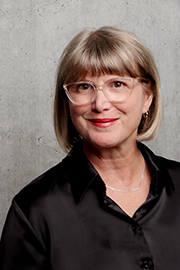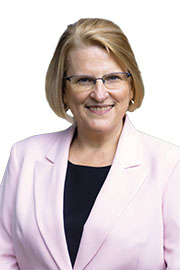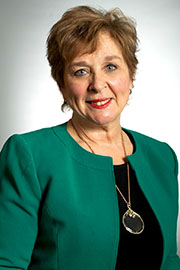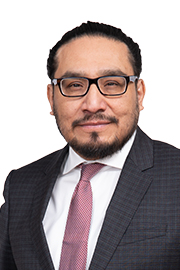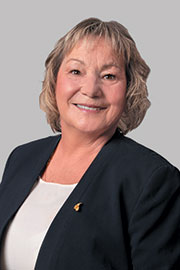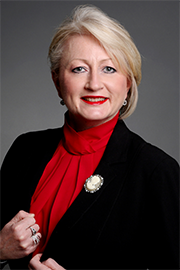- Mar/18/24 10:30:00 a.m.
I seek unanimous consent that, notwithstanding standing order 45(b)(iv), the time for debate on opposition day motion number 2 regarding support for primary care providers be apportioned as follows: 56 minutes to each of the recognized parties and eight minutes to the independent members as a group.
Interjections.
- Hear!
- Rabble!
- Mar/18/24 10:50:00 a.m.
Back to the Premier: Primary care providers and patients know that this is just a drop in the bucket; it’s not going far enough. And the government knows this too. They’re making a choice. They’re choosing to expand private, for-profit care in this province to line the pockets of private, for-profit corporate shareholders. That’s what this is all about.
Doctors in this province, on the other hand, are spending nearly half their time filling out forms and doing administrative follow-ups. Our motion would unlock thousands of hours of direct patient care by investing in new supports for health care providers. It’s about putting patients first instead of paperwork.
So back to the Premier: Is he content to govern a province where millions are going without basic care, or will he listen to the primary care providers and take this simple step to get people the care that they so desperately need?
Interjections.
- Hear!
- Rabble!
- Mar/18/24 11:10:00 a.m.
They should be excited about the 78 primary care multidisciplinary teams that have been announced in February and are now actively recruiting. We’ve seen some of that information coming forward, and it is literally game-changing for the people who have to date been unable to access primary care physicians in the province of Ontario.
The multidisciplinary team, where you are working together as a team, not as independent clinicians, makes a better patient experience, and, frankly, it is what clinicians want to work with. They want to be able to have the opportunity, when they diagnose a patient with diabetes, to be able to transfer them to another member of the team, a dietitian, perhaps, to go over what that impact is on their lives. The multidisciplinary team approach is something that is very well documented to be a proven success story, which is why we have expanded them by 78 additional teams.
- Hear!
- Rabble!
- Mar/18/24 1:40:00 p.m.
I’m delighted to rise in the House today to talk about our government’s plan and our continued work to improve primary care for all Ontarians.
This motion really highlights the differences between our government and the opposition. For one thing, the opposition is very late to the issue; they’re really coming in after the fact with this motion. Our government has already held consultations, spoken with primary care providers across the province, created a specific task force with the OMA focused on reducing the administrative burden, announced a plan, and taken many steps to address this specific issue. We’ve also implemented many other programs to address the broader challenges and improve primary care in Ontario.
While the Liberals and NDP, through this motion, are focused on hiring more administrative staff, our government is focused on improving patient care, hiring more doctors, nurse practitioners, nurses, and all the allied health professionals. We are already taking action, listening to our health care partners and making historic investments in primary care and reducing red tape, including red tape in doctors’ offices.
Under the leadership of Premier Ford and Minister Jones, our government has been making record investments in health care.
Our system was neglected under 15 years of Liberal government, and our government knows that the status quo is not working.
Let’s look at what the state of Ontario’s health care system was after 15 years of failed Liberal government. For over a decade, the NDP propped up the Liberals as they cut medical residency positions, cut the number of physicians practising in family health teams, and created the longest health care wait times in Ontario’s history.
When they were in office, the NDP cut medical school enrolment by 10%, thinking that we had too many doctors. The impact of that decision—just using U of T medical school as an example—was a staggering drop in the number of doctors being trained. Just in one class at U of T medical school, they went down from 252 doctors being trained to 177. That’s a lot of doctors we do not have in Ontario today, due to bad decisions by the opposition.
And the Liberals, frankly, were just as bad, as the former Liberal Premier, in 2015, eliminated 50 medical residency spots, resulting in over 500 less doctors practising in Ontario today—100 less doctors by 2016, 250 less doctors by 2019, and a staggering 550 less doctors now practising in 2024 in Ontario, as a result of decisions made by the former Liberal government.
Do we wish they hadn’t made those decisions? Yes, we do. We really wish we had those doctors today because that would go a long way to meeting Ontario’s needs. But we can’t change the past. We can just make good decisions going forward. And that’s what this government is doing.
Let’s just contrast what the NDP, when they were in power, or the Liberals, when they were in power—sometimes supported by the NDP—did with what this government is doing. The Ford government is:
—reversing failed Liberal and NDP policies and growing our health care workforce, adding 12,500 new doctors across the province since 2018—12,500, that’s a lot;
—launching the largest medical school expansion since we were last in government, building a new medical school in Brampton and in Scarborough, and adding 260 more undergraduate and 449 residency spots at all of Ontario’s medical schools; and
—making a record investment recently, in February, of $110 million to create 78 new and expanded primary care teams, adding over 400 new primary care providers to help close the gap and connect some 328,000 Ontarians to primary care.
This, together with expanding all those medical school spots, will result in 98% of Ontarians having access to a primary care provider. But we’re not stopping there.
As a result of the failed Liberal and NDP policies, too many Ontarians were having to wait too long for appointments or surgery, having to travel too far to access care, or spending too much time navigating the health care system.
One year ago, our government introduced Your Health, a comprehensive plan to make bold and innovative, creative changes to strengthen all aspects of our health care system, making it easier and more convenient for Ontarians to connect to care closer to home. We’re already starting to see the results.
Ontario has the shortest surgical wait times in all of Canada.
Almost 18,000 people have received their cataract surgery at community surgical centres just between April and December of last year, 2023. That’s 18,000 people who can get back to work, can read to their grandchildren, can go about their daily lives, who otherwise would be on a wait-list.
The pandemic backlog for cervical cancer screening was eliminated by last August.
We’re continuing to make progress in improving mental health care, opening eight new youth wellness hubs over the past year, with 22 hubs launched since 2020, that are connecting more than 43,000 youth and families to mental health services, primary care and more.
We’re getting shovels in the ground for over 50 hospital developments that will add over 3,000 new hospital beds to the 3,500 beds that we have built since 2020—building more beds in just four years than the Liberals did in 14.
While the NDP sat idly by as the Liberals fired 1,600 nurses, this government has added more than 80,000 nurses in Ontario since 2018. In fact, 2023 was another record year for nurses, with more than 17,000 nurses registering to work in Ontario and another 30,000 nursing students studying at Ontario’s colleges and universities.
We’ve also added over 12,500 new doctors since 2018, and we are listening to our front-line doctors—our family doctors—about the challenges that they are facing. That’s why we’re working very closely with the Ontario Medical Association to eliminate duplicate and outdated forms so that doctors can focus more time on their patients and less time on needless paperwork. In fact, my colleague and parliamentary assistant to the Minister of Health MPP Gallagher Murphy and I already toured the province—I think that was almost a year ago now—meeting with primary care providers across the province to hear from them about the administrative burden that they are dealing with and to discuss proposed solutions.
But we’ve done even more. We’ve allowed pharmacists to treat and prescribe medications for 19 common medical ailments, and this program has been an enormous success. Last year, pharmacists completed over 800,000 assessments at over 4,500 pharmacies across all of Ontario. That initiative alone has resulted in hundreds of thousands of fewer visits to doctors’ offices, which also relieves pressures on family doctors and our entire health care system.
We currently lead the country with 90% of people connected to a regular primary care provider, and we have added hundreds of medical residency positions specifically for family doctors across the province.
But while we’re pleased with the progress, we know that there’s a lot more work to do to close the gap for people in Ontario not connected to primary care.
Just last month, we made a historic announcement. Minister Jones was joined by Dr. Jane Philpott, the Ontario College of Family Physicians, the Ontario Medical Association, the Ontario Hospital Association, the Registered Nurses’ Association of Ontario, and the Alliance for Healthier Communities—all of them came together for this historic announcement of $110 million connecting more than 300,000 people to primary care teams, the very kind of teams that the member for Nickel Belt said are the best kind of primary care. That’s the kind of teams we announced, adding over 400 new primary care providers—by the way, the job postings for those are up—as part of our 78 new and expanded interprofessional primary care teams. These teams consist of family doctors, nurse practitioners, registered and practical nurses and more—dietitians, social workers; whatever is useful for that community, they will have in their allied interprofessional primary care team, and they’ll be able to get better service that way. And that’s what I was talking about—about focusing on delivering more patient care by hiring more care providers, and less on the other stuff. These teams, as I said, have all of this stuff in them.
In Peterborough, which was one of the places I visited for consultations with primary care doctors, they got new funding, and it will allow the newly established Peterborough Community Health Centre to connect more than 11,000 people to primary care.
This announcement also included the innovative proposal in Kingston, the Periwinkle proposal, where an investment of $4 million will help up to 10,000 people connect to team-based primary care.
And I had the great pleasure of joining my colleague the member from Brantford–Brant to announce the government’s investment of over $3.8 million to connect approximately 14,000 patients in Brantford, Brant, Six Nations and surrounding communities to a primary health care provider.
Almost daily, our government has been announcing investments in communities across the province to connect more people to primary care:
—in Lanark–Frontenac–Kingston, more than 13,000 people will be connected to primary care;
—an additional 4,000 in Bruce–Grey–Owen Sound;
—6,600 residents in Leeds-Grenville; and
—many more people in Thunder Bay and Essex and across the province; I’ve got a whole list of them here, which we could go through one by one. Let’s see—
Interjection.
- Hear!
- Rabble!
- Mar/18/24 2:00:00 p.m.
It’s an honour to be able to speak on this opposition motion on primary care.
Last month, I was at the NAN—Nishnawbe Aski Nation—chiefs’ assembly meeting. One of the things that they talked about was that the First Nations in NAN territory in northern Ontario—49 First Nations—continue to experience an ongoing and worsening state of access to quality health care, including emergency health services. There’s limited accountability within the health care system. First Nations are in a state of perpetual crisis, which is demonstrated by sudden deaths of children. We have child suicide pacts and other preventable deaths that are happening.
I know that primary care, in general, and family medicine, in particular, are definitely in crisis. It is on the lips of family doctors, and they desperately need high-level leadership and policy focus to prevent things from collapsing.
One of the physicians I spoke to earlier said that many of his contemporaries who have started family practices or have taken them over—either they have already gotten out in favour of other things or are desperately trying to get out. One of the things that he said about this motion is that providing more administrative support is definitely part of the solution and would definitely make it more appealing to go into family medicine, and he said that this motion is great in that regard.
Listening to the member across the way—thank you for those comments. Thank you for not even mentioning Kiiwetinoong. Thank you for letting us know that oppression still continues in Ontario.
Thank you to this government for letting me know, letting First Nations people know, that colonialism by way of health care still exists.
In the north, we have to change a sickness system into a primary care system—because currently, it is sickness care, because the only time the system responds is when our people are dying and when our people are sick. Meegwetch.
- Hear!
- Rabble!
- Mar/18/24 2:10:00 p.m.
High-quality primary care is the foundation of a health care system. Primary care through family doctors is the first point of access and interaction with our health care system for the majority of people. Having access to primary care through a family doctor consistently leads to improved health outcomes. It prevents minor ailments from turning serious. It can prevent and manage chronic problems, as one of the main functions of primary care is disease prevention and health promotion. Through that it reduces the burden on hospitals, as it results in fewer emergency department visits and hospitalizations.
Having a family doctor also allows for follow-up care once a patient has been discharged from a hospital. Primary care is the first line of defence and we cannot underestimate how essential primary care is to ensuring that the rest of the health care system works.
Investing in primary care provides substantial savings to the province’s finances. Some 2.2 million Ontarians do not have a family doctor right now and according to the Ontario Medical Association, that is going to increase to 4.4 million people in just two years, of course unless significant action is taken.
What action can be taken? It’s not that hard to figure out. Family doctors will tell you exactly what needs to be done. Listen to the practitioners. There are several changes that need to be made. The NDP motion today is one step and it’s an important one, because it is a solution that results in help quickly while we also work on longer-term solutions.
The Ontario College of Family Physicians estimates almost half of a family doctor’s work week is taken up by paperwork. By providing the appropriate administrative supports, we can increase a doctor’s capacity for patient care. This is a simple solution. It frees up time for current doctors to take on more people as their patients, simply by hiring staff to take on the administrative portion of the doctor’s work.
We’re calling on the Conservatives to support this proposal that can and will make a difference in the lives of millions of Ontarians without a family doctor.
- Hear!
- Rabble!
- Mar/18/24 2:20:00 p.m.
I stand to debate this motion with the knowledge that in Niagara alone 73,000 residents—seniors, young families, everyone—are in search of a family doctor, an increase of 20,000 in just nine months. How can we, as stewards of this province, say we are addressing the emergency room crisis or even claim to mend the gaping wound of primary care scarcity when our primary care providers like Niagara’s family health teams have not seen a base funding increase in over a decade? That means when the government invariably kicks up dirt, points their fingers and says that the problem is out of their control or is inherited. Refusing to increase base funding for the very primary care providers that are in crisis is not about making different choices about Ontario’s health care. It is about choosing to recklessly and dangerously ignore Ontario’s health care.
Our primary care providers are the unsung heroes. When I sat down with our family health teams in Niagara, I saw a committed staff calling out for a supportive primary care system. The message was very crystal clear. They need, we need an urgent strategy to bolster our workforce, allowing these dedicated professionals to focus on treating patients, not paperwork. This is not just about numbers; it’s about people—people suffering because our system fails to prioritize their most basic health needs.
We must act, not tomorrow, not next year, but now. To invest in primary care is to invest in the heart of our communities. Let’s give our family health teams the support they deserve. Let’s build a better and healthier Ontario for all residents.
- Hear!
- Rabble!
- Mar/18/24 2:20:00 p.m.
I am happy to rise today in the House to build on the remarks from my colleague the MPP for Eglinton–Lawrence, to share with this House how our government is leading the way to strengthen primary care in every corner of our province for years to come.
We greatly appreciate the leadership and dedication of Ontario’s primary care providers to improving the quality of life, health and well-being of Ontario families. The work of the primary care sector does not go unnoticed. Primary care is an integral part of our health care system, meeting the different needs of our diverse communities and populations, including in many northern and rural communities, and providing care to some of our most vulnerable residents. It helps to preserve the capacity of our emergency departments and hospitals, while also building important connections with other key services that Ontarians rely on, such as home and community care or mental health and addictions supports.
Now, unlike the NDP and the Liberals, our government, under the leadership of Premier Ford and Minister Jones, is working hard to support primary care across this great province of ours. And while progress has been made, we know there’s more to be done. That’s why, just last month, Minister Jones announced a record investment of $110 million to expand access to primary care in every corner of the province.
I would like to highlight that, of that $110 million, $20 million of that is for an increase to our existing primary care providers. I do know that the member from St. Catharines just made note in her speech that they have not received an increase. Speaker, I reiterate: $20 million of that $110 million is an increase for the existing primary care.
Now, this funding will connect up to 328,000 Ontarians to the care that they need closer to home. I was delighted to participate in the announcement in York–Simcoe that our government’s $1.4 million will support an additional 2,700 patients.
Speaker, I’d like to speak about that announcement that I had attended, because it was interesting, as my colleague the other parliamentary assistant to the Minister of Health noted. We were attending various round tables with primary care providers, starting back last May. My first round table was in my own community of Newmarket–Aurora—in fact, with the Aurora Newmarket Family Health Team. It was wonderful, sitting down and chatting with them about what they felt our government could perhaps help with so that they can spend more time with their patients. One of the things I heard was, obviously, the burden of paperwork. The other thing was about multidisciplinary teams: how well they work together by having the primary care provider, a nurse practitioner, nurses, social work, dietitians, physiotherapy. It was truly the multidisciplinary team that came together, that provided that great service to their patients.
I bring this up because when I attended the announcement for York–Simcoe, after the announcement, one of the members of the Aurora Newmarket Family Health Team came up to me and she thanked me. She said, “Thank you, Dawn. Your government is listening, and we appreciate this announcement. I said, “I am so happy that we are able to spend that time with our primary care providers, listening to them, because they are the ones who are providing that great care for the patients,” and that’s what we are doing, and that’s what this announcement was all about. I thank her for coming up to me after that announcement.
Now, as well, Speaker, we witnessed—I witnessed, and some of my colleagues witnessed—a great excitement in Brampton just this past Friday, when we announced their community expansion. WellFort CHS is receiving over $2.7 million, and they will be able to connect over 7,000 patients. As well—and I’m happy to say about this one; I was very excited—Homeless Health Peel is receiving over $1.6 million to connect more than 1,600.
Why I’d like to talk about Homeless Health Peel is because I met with the director, who’s a nurse practitioner, and he led this group that came out of COVID-19. I’m very excited about this program, because I remember approximately maybe a year ago—just under a year ago—I met with him a couple of times. Clinton is his name, and he does such great work. They are mobile. They are going into homes, dealing with our most vulnerable population, our homeless population, ensuring that they are cared for, and they started this journey in COVID-19.
Well, Speaker, I am proud of our government, because now, with that funding, they are going to be able to help connect more than 1,600 people. I’m proud of our government for doing that, and thank you, Clinton and your entire team, for what you’re doing for the great people of Peel region.
In Simcoe North, 20,000 people will be connected to primary care, over 8,700 in the Waterloo region and 5,000 in Parry Sound–Muskoka. Following our government’s announcement of an almost $6-million investment in northeastern Ontario communities like Timmins, Porcupine and James Bay, Katherine Harvey, the interim executive director and a registered nurse from the East End Family Health Team in Timmins, had this to say: “It gives us hope for a bright future for health care in Ontario. I actually could cry.”
And this good news is continuing in Niagara, Elgin county, Listowel-Wingham, Northumberland county and so many more communities.
In Ontario and around the world, health care systems are continuing to face challenges and our government continues to actively engage with our health care partners to identify solutions to respond to these challenges. Through our Your Health plan introduced last year, we are taking bold action and making health care more connected and convenient. This is to improve the health care experience for all Ontarians at every stage of life.
Speaker, I would like to highlight some of the funding and the number of patients that will be connected through this primary care funding that we announced in February. The member from the opposition spoke about First Nations. I’d like to highlight a few of the fundings for our First Nations:
—Weeneebayko Area Health Authority in Moosonee and James Bay coast: Over $900,000, and it will connect 2,275 patients;
—I’d also like to mention right here in Toronto, Anishnawbe Health Toronto: A mobile unit expansion; they will be connecting 570 patients;
—I’d also like to speak to the Wasauksing First Nation in Parry Sound: with their expansion, 400 more patients;
—I mentioned Weeneebayko Area Health Authority already, but it’s actually double the funding, so it’s actually well over a million dollars and 4,450 patients for care.
Speaker, I could go on:
—Six Nations of the Grand River Family Health Team, and that’s at Six Nations of the Grand River: more than $1,250,000; that will connect 2,275 patients;
—SOAHAC Newbury in the Newbury area: 800 patients;
—SOAHAC Chippewa in Muncey: 570 patients will be connected;
—Six Nations of the Grand River family health, with over $600,000 and 1,140 patients.
This is great to see these numbers.
Speaker, to improve the health care experience for all Ontarians at every stage of life, our government recognizes the need for an integrated approach—one that uses the knowledge, skill and expertise of many dedicated health care professionals. We are continuing to collaborate with partners to connect communities to the services they need close to home, no matter where they live.
Ensuring continued engagement with the primary care sector remains critically important to us to inform broader health system priorities from a primary care clinician’s perspective.
Our government is working with our health care partners to tackle the administrative burden on physicians through the bilateral Burnout Task Force, by improving the OMA-endorsed priority government forms. Our work has significantly accelerated work to simplify forms, and we look forward to sharing the improvements that have been made in the near future.
Our government has also launched an initiative called Patients Before Paperwork. This is to further tackle the administrative burden on physicians while reducing the risk of delays in diagnosis and treatment.
In our Your Health plan, we outlined our plan to axe the fax, replacing outdated fax machines with digital alternatives. Yes, it’s hard to believe that fax machines are still used, but they are. To give some perspective, a 2022 provincial survey of health care providers found that there are an estimated 152 million faxes across Ontario’s health care settings in a single year, including 71 million paper-based faxes and around 81 million e-faxes being sent between health care providers.
Other initiatives we have launched through Patients Before Paperwork include an e-referral service to allow the electronic referral of patients from primary care to specialty care.
Speaker, these are the things we heard about when we attended these primary care round tables. They talked about the need to ensure that they can reach out and get that referral for their patient. I heard it consistently through each of the round tables. One of the biggest stresses for a primary care provider is that they want to refer their patient to that specialty care sooner than later, because they know the faster the diagnosis, the better the outcome. These are the things that we’re working on to ensure that we answer the need of our primary care providers so that we can connect them to the right referral at the right time, so that patients can get that diagnosis sooner, because we know they will have better outcomes.
We’re also working on an e-referral service to allow primary care providers to send lab requisitions electronically, covering all labs in the province, compared to the current system in place, with a minority of labs connected.
The provincial health services directory is the development of a single-source directory for health care services in Ontario, so that health care providers and patients can have access to up-to-date, reliable and accurate information about the services provided by individual health care providers across the province. Our forms initiative further enhances provider access to administrative forms. They are standardized and available from point-of-care systems. Digitalization and standardization of forms streamlines form management and delivery while making the practice less burdensome for providers, while improving data quality and information-sharing. I think this point right there is extremely important because, again, this is something I heard throughout the round tables with our primary care providers. They really spoke about how we need to use advanced tools, that we are in the 21st century. Why are we using these faxes? How can we become more digitally inclined? Some are doing more than others, but we need consistency.
I want to reiterate this point: Digitalization and standardization of forms streamlines form management and delivery—that’s not so much with support staff; that’s using tools that people can use in this modern-age world while making the practice less burdensome for providers, while improving data quality. That is a critical component as well—the quality of that data that is being used and the information for sharing purposes. And why? For the benefit of that patient.
A number of eForm approaches exist, including provincial administrative forms being integrated into EMRs, locally hosted forms in EMRs, and the SADIE portal that is used by providers to submit electronic forms to the Ministry of Health.
Patients Before Paperwork would develop an eForms governance model and form integration standards, identify a technical delivery platform that can be broadly leveraged across HSP point-of-care systems for consumption of eForms, and roll out eForms on the common platform so various point-of-care systems can consume, exchange and disseminate form content with intended partners, replacing the ad hoc paper forms. This is going to be amazing, and we know it’s going to solve a lot of the challenges with our primary care providers. This work will be aligned with the Ministry of Health and the OMA forms committee work to streamline and rationalize existing, high-volume, high-burden forms. Early priorities for form integration with EMRs and other front-line provider solutions will be directly informed by this work.
We look forward to continuing to connect with and engage our primary care partners as progress is made toward delivering more integrated and sustainable primary care services to all Ontarians.
Speaker, before I continue, I thought this would be a good point to talk a bit more about the announcement I attended in Brampton this past Friday. Listening to the words of the executive director as she informed me about some of the work that they are doing with their primary care, how they’re working, thinking outside of the box, and how they’re supporting their community members—not just there at the CHS, but going out into the community. I think this is where the Homeless Health Peel also came in—because they are right there, out at different shelters, going in there to provide the primary care.
I also think back to the announcement I attended in Georgina for that care expansion. It was so exciting to see all the people who participated. You had the paramedics. There was the region. You had the primary care providers. You had Southlake health attending. You had CMHA participating, from the mental health and addictions perspective. You had the nurse practitioners there as well. There are so many different parts because they knew—they said, “This is exciting. This is what we need, because we know the primary team approach is exactly what we need.” And that, as I said earlier—connecting more than 2,700 patients right there in the Keswick and Georgina area.
Speaker, back to the health report manager: This sub-work stream would introduce service improvements to the HRM, which sends reports from acute-care hospitals to community providers like primary care to inform care transitions.
A number of issues have been raised, particularly by receiving facilities—that how reports are received can be a fragmented and administratively overwhelming experience. Ontario Health has conducted a third-party assessment of HRM and has identified key areas of improvements to the HRM so that the noise in the receiving EMR can be eliminated.
Patients Before Paperwork would bring focus to these areas, including standardization of reports from sending facilities, a more stringent approach to how EMR and other point-of-care systems present reports to the clinical user, and migration of the service to the clinical data foundations platform at Ontario Health to better serve the clinical communities by enabling capability to choose what reports are relevant and to be received via publication and subscription.
I would also like to speak to—parce que je sais bien que notre collègue a mentionné les patients francophones, je voudrais bien remarquer le Centre de Santé Univi Health Centre qui est à Sudbury district, French River. Ils ont reçu plus de 617 000 $, et il y aura 2 275 patients qui vont recevoir des soins.
Aussi, encore, le Centre de santé communautaire de Kapuskasing et région—c’est le Kapuskasing Family Health Team. Il y a une nouvelle équipe maintenant là. Ils sont à Kapuskasing et ils ont reçu plus de 355 000 $ et il y aura 2 600 patients qui vont recevoir des soins aussi.
Une autre expansion, c’est, encore, le Centre de Santé Univi Health Centre, qui est à French River : plus que 300 000 $. Il y aura 2 400 patients qui vont recevoir des soins là-bas.
Aussi, à Chapleau, le Chapleau and District Family Health Team : il y a une expansion là-bas. Je suis tellement contente de vous dire, madame la Présidente, qu’ils vont recevoir 180 000 $ et il y aura 2 200 patients qui vont recevoir des soins.
Alors, je suis tellement contente qu’on a des expansions pour nos gens francophones, parce qu’on sait bien qu’on a une grande population francophone ici en Ontario. Donc, je suis tellement fière de notre gouvernement de faire ces expansions-là.
To ensure our government’s exciting work to strengthen primary care can continue, I trust all members in this House will be voting to support the upcoming budget—
- Hear!
- Rabble!
- Mar/18/24 2:50:00 p.m.
Thank you—to signal their support to this very, very important sector, if not the most important sector, our health care sector, and to all Ontarians that primary care is a top priority in the province.
All Ontarians deserve to receive health care that is responsive to their needs, regardless of where they live or who they are. And our government will continue to support better, more connected, and inclusive patient-centred care for everyone. This is why I hope that the opposition will indeed show their support for our primary care investments. I just spoke about so many from my riding, to a variety of ridings—Brampton to all over northern Ontario, other locations, even downtown Toronto, mobile expansions. This is why I hope the opposition will show their support for our primary care investments—because those who were at these announcements are expressing their appreciation for these expansions, because they know these expansions and these investments are making and will make a difference.
If the opposition members truly believe in investing in our primary care, then they should show their support by voting for the upcoming budget.
- Hear!
- Rabble!
- Mar/18/24 3:10:00 p.m.
This morning I shared the stories of Gloria and Susan, just two of the more than 65,000 Londoners who do not have access to primary care. In her response, the minister talked about the expanded family health team in Elgin, which will help about 1,200 of those 65,000 patients. This is completely inadequate to deal with the scale of the problem and frankly insulting to people in my community, who deserve to see a family doctor in London.
My office gets calls daily from people desperate to find a family doctor or nurse practitioner. Often, they haven’t seen a primary care provider in years. The only solution this government offers is to register with Health Care Connect and then wait indefinitely without ever hearing back about a doctor accepting new patients.
With burnout the number one issue facing family doctors in Ontario, more and more doctors are retiring without a replacement, leaving more and more people without care. When people don’t get the care they need, they are forced to rely on walk-in clinics that book up as soon as they open. They wait hours at St. Joe’s urgent care or have to go to one of our overwhelmed emergency rooms.
Speaker, this government’s tiny expansion of team-based care was described by one family doctor as about as helpful as an umbrella in a hurricane.
This is an all-hands-on-deck situation, which is why the NDP has put forward this motion. We are calling on the government to invest in the number of family health teams we actually need in Ontario. We are urging an investment in administrative staff to help reduce the paperwork burden that consumes about 40% of a family doctor’s time—time that could be spent seeing patients instead. Support this motion.
- Hear!
- Rabble!


